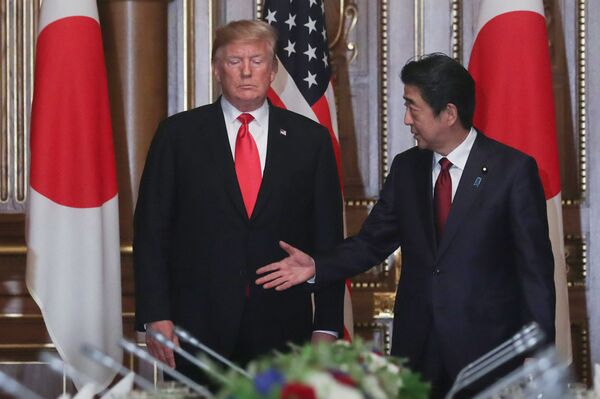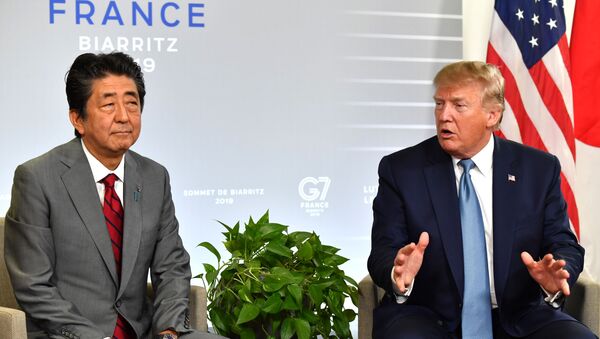The US president for one has always opposed multilateral trade initiatives, arguing that they allow their members to live off of America. Shortly after being elected president, Trump announced that the United States would withdraw from the Trans-Pacific Partnership (TPP). The nearly quarter-century North American Free Trade Agreement (NAFTA) did not suit Trump. As a result, he pushed through an agreement between the US, Mexico, and Canada on new terms – the new United States-Mexico-Canada Agreement (USMCA). He also cut short negotiations with the EU on the Transatlantic Trade and Investment Partnership (TTIP).
The current US policy is clearly aimed at concluding bilateral trade agreements. The possibility of concluding a free trade agreement between the United States and Great Britain after the latter leaves the European Union is being considered. As The New York Times noted, Trump has now set his sights on entering into bilateral deals with Japan and India.
According to a White House statement released this week, the Trump administration has reached a preliminary trade agreement on tariff barriers with Japan, with a final document to be signed in the coming weeks. As noted by the newspaper Nikkei, the agreement provides for the reduction or complete abolition of duties on American agricultural products: beef, pork, wheat, and wine. In this way, Trump is trying to mitigate the negative consequences of getting out of the TPP when American farmers lost their competitive advantages in Asian-Pacific markets. In the face of the trade war with China, farmers suffered almost more than anyone else, having lost the main market for their products. Meanwhile, this is Trump’s key electoral base, so now he is trying with all his might to promote bilateral agreements that facilitate the access of American agricultural products to foreign markets. In return, Japan, as noted by The New York Times, hopes to abolish US duties on its machinery products, as well as Trump's written commitment not to introduce tariffs on Japanese cars.

The United States is also trying to negotiate with India. According to the White House, Trump intends to join Indian Prime Minister Narendra Modi, who will meet 22 September with Indian-Americans in Texas. The NYT, citing sources close to the negotiations between the two countries, notes that the potential agreement could include India’s reduction of tariffs on American agricultural products and the introduction of maximum restrictions of 20% on duties on imported electronics of 5,000 rupees ($70). In return, India may demand that the United States return benefits under the Generalised System of Preferences (GSP) of the United States. Earlier, Donald Trump deprived India of benefits under the GSP programme, which provides for the duty-free import of certain categories of goods from countries with developing economies. Trump explained his decision by saying that India did not convince the United States that it would provide fair and reasonable access to domestic markets.
Chinese expert Xu Yudong, an associate professor at the Ludong University School of Business, said that the US-proposed bilateral agreements can only work in the short run. But in the end, the US bet on bilateral agreements is unlikely to pay off, and Washington will still be forced to return to the multilateral format.
"Obviously, multilateral agreements must take into account the interests of all parties; otherwise an agreement cannot be reached. The format of US bilateral agreements is short-term solutions. The logic is that for the United States, multilateral negotiations are more difficult to conduct since most countries are at different levels of development and it is difficult to reach an agreement acceptable to all. The US is going in a roundabout way. They first conclude bilateral agreements, putting them, thereby, above multilateral agreements, and then put pressure on other countries. That is, they are integrating bilateral agreements into a multilateral format. In the short-term, such an aggressive policy may be effective but, ultimately, the US will still have to sit at the negotiating table in a multilateral format".
China, in turn, is trying to seize the opportunity and fill the vacuum created by the United States’ withdrawal from multilateral agreements. In addition to seeking global cooperation through implementing the Belt and Road Initiative, the country is actively participating in the formation of regional trade agreements. For example, as a result of recent consultations between China and ASEAN countries in Bangkok, the parties noted progress in implementing a bilateral free trade agreement and agreed to complete negotiations on the Regional Comprehensive Economic Partnership (RCEP) free trade agreement by the end of the year.

The conclusion of the agreement has been hindered by India, which fears the flow of Chinese goods after trade liberalisation under the RCEP. However, in addition to this, China is also negotiating a China-Japan-South Korea Free Trade Zone. If this agreement is reached, experts say, RCEP negotiations should also be much easier and more efficient. While the United States is resisting the Transatlantic Trade and Investment Partnership, China, for example, is strengthening the 16+1 format – Chinese initiated-platform to expand economic and investment cooperation with Central and Eastern European countries.
According to expert Xu Yudong, the US-proposed alternative bilateral formats for cooperation are advantageous mainly to developed countries. While for emerging markets, it is the multilateral format that matters, when the interests of all parties are taken into account. To do this, of course, is not easy, if only because of the completely different level of development of their markets. But, ultimately, avoiding such deals will still not work, given the increasingly multi-lateral nature of trade relations in the world.



